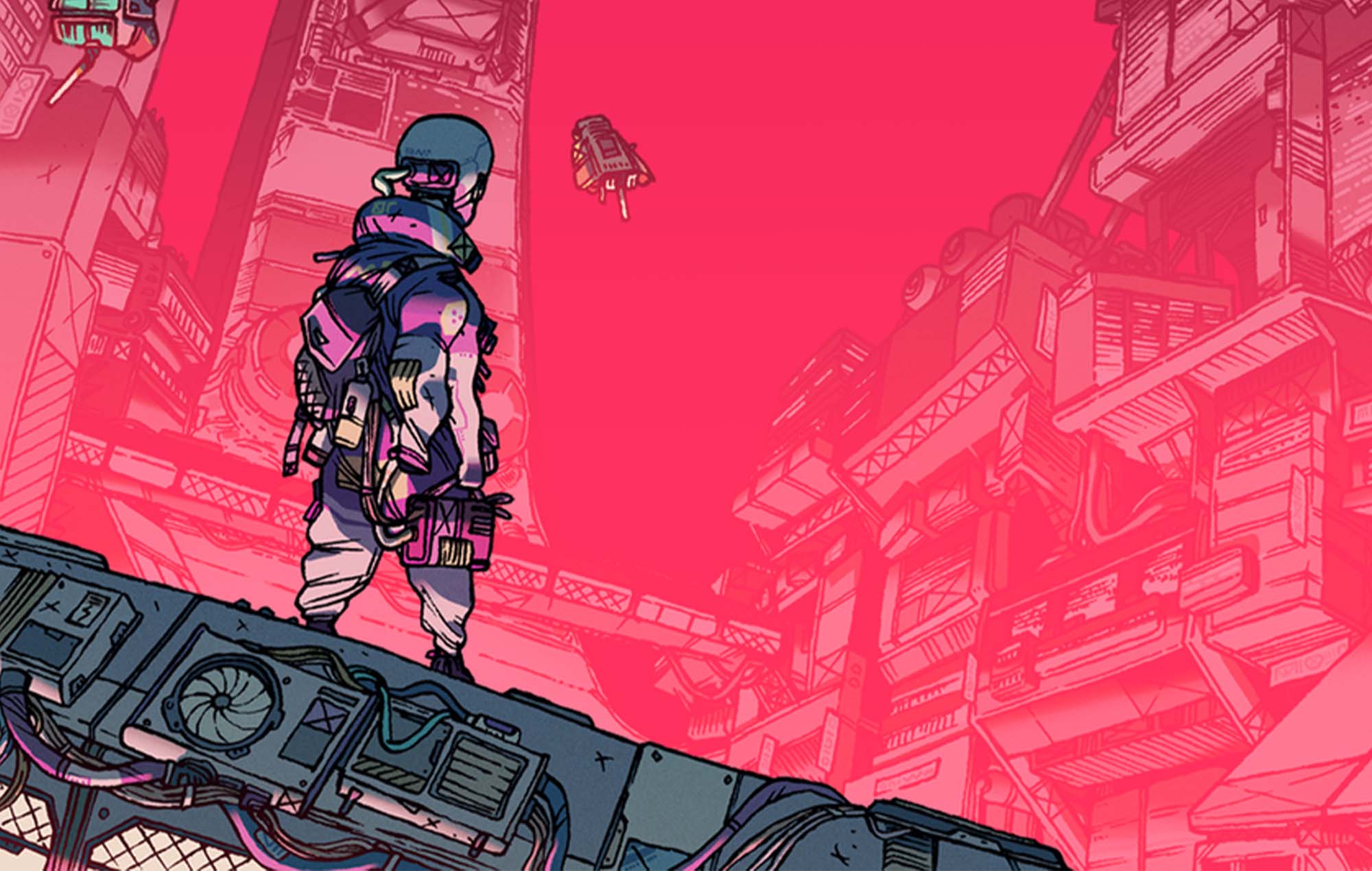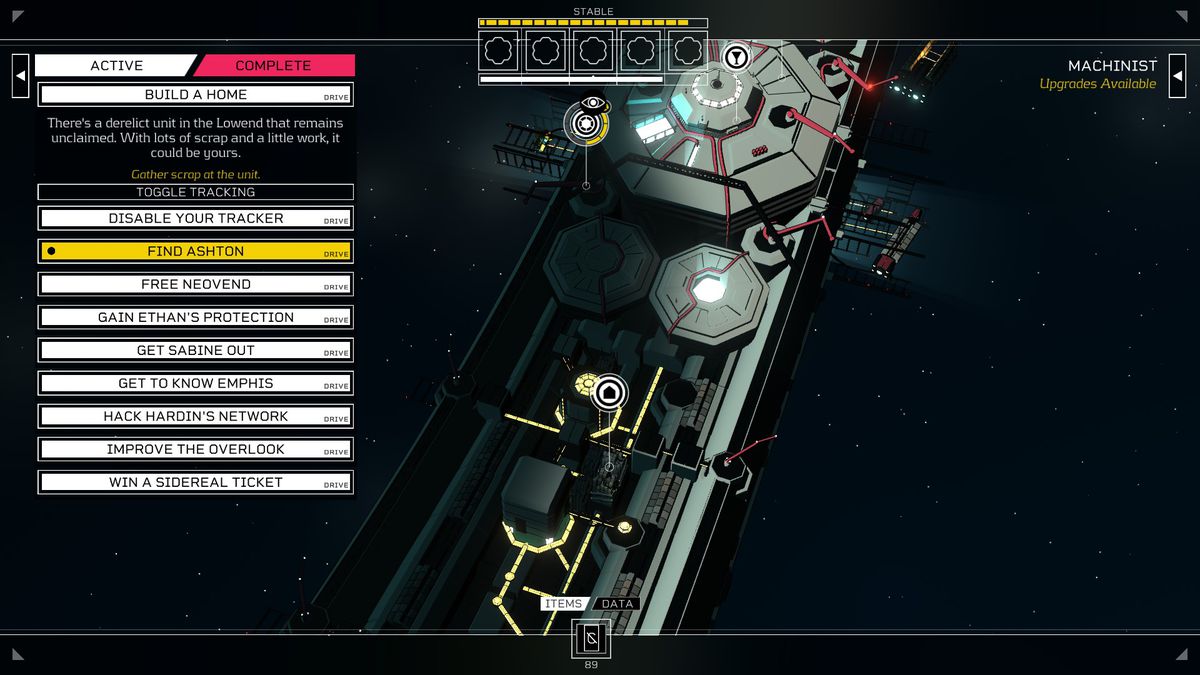Citizen Sleeper review: a subversive sci-fi RPG with tabletop freedom

Partway through Citizen Sleeper, I realize that the closest thing I have to real kin on this entire space station is trapped inside an ancient vending machine. Neovend 33 is a cranky little thing, but who can blame it? The AI has been dormant, gathering dust in a locked bay, hoping that someone like me — a dysfunctional Sleeper barely holding it together — would come along to help. Long after I bid Neovend farewell, it stays planted in my head like a seed, and I’m alone in facing the impracticalities of my own existence. When I’m done with the game and have nothing left to do, Neovend is what I long for.
Citizen Sleeper is the new narrative-driven, text-heavy role-playing game from Jump Over the Age (aka Gareth Damian Martin, the creator of 2020’s In Other Waters) that uses a dice system inspired by tabletop games. A player plays the role of a “person” who flees from Essen-Arp in an artificial body frame. This is a “planned obsolescence” game that uses a dice system inspired by tabletop games. These frames serve as a safety net to keep escapees from Essen-Arp’s hands. They can also send me home if I get too far. It is possible, though, to partially repair the Sleeper’s body, which is more than can be said for many electronics today.
Drawing from the tabletop inspirations of Citizen Sleeper, Citizen Sleeper offers three classes. I choose one as far as possible from my real-life traits: the careful, structured Machinist who excels at engineering-type work. I awaken, filled with anxiety, on Erlin’s Eye (or simply “the Eye”), a decaying space station. After meeting Dragos the junk-saver, I realize that my frame needs to be repaired. Capitalism is an endless bitch, but I quickly learn that even in the face of truly bleak choices, the game always allows the Sleeper to retain a soft, haunting sense of humanity through dialogue and actions. Fleeting scenes of violence and brutality also offer vulnerability, and I come away from them filled with conflicting flashes of sadness and resentment. Ethan is a hired man. I find it very moving. At the end, however, I reflect on humanity’s insignificant details.
It takes me several cycles to build momentum toward narrative immersion, as well as a bit of fledgling confidence on the Eye. The game’s progress is made by “Cycles”, which are basically short periods of time. Every cycle involves managing my health (my body’s condition), my dice roll (the actions that I am able to perform) and my food bar (the amount of energy). The worse my condition, the fewer dice I have. Each new character or location I discover unlocks a “drive,” which is a broad goal or objective to achieve. For example, I can join a commune, or find a way out to get rid of the Essen-Arp Tracker. Citizen Sleeper’s core idea is survival and using drives to meet your needs.
The early tutorial cycles aren’t complicated if you’re familiar with turn-based tabletop RPGs that run on dice. Still, it takes me some time to find a good rhythm. By the time I hit cycles 30-40 I feel a singular, laser-like focus as I enter the Greenway, where I must forage for fragile mushrooms. I immerse myself in delivering noodles, unloading cargo, and scavenging for scraps to repair little parts of my body.
I spend at least 3 a day caring for stray cats. I stubbornly spend at least 3 cryo a day feeding a stray cat, in the hopes that maybe the game will eventually cave and allow me to have a pet (it doesn’t).

Image: Jump Over the Age/Fellow Traveller
As each cycle continues, I continue to explore the Eye, becoming more familiar with its bureaucracies and sojourning international mercenaries. The “collapse” was an unfortunate event that made the station a haven for insecure and fleeing citizens, as well as a sanctuary for industrial greed victims and refuge for restless AIs. Emphis is a street vendor who has his body marked by corporate biotech. Sabine is an unsettling doctor with suspicious motives. Feng is a hacker who was born on the Eye and determined to rid his house of any corporate history. He’s one of my favourite NPCs. It’s clear that Sleepers like me are a rare sight here, though, and the practical realities of living in this lawless place mean that many people view the Sleeper’s valuable body as a means to an end. Every Eye has a place in this world, except for me.
One thing that threw me off is that the credits play after every “proper” ending, and then I’m returned to where I left off, free to work on any remaining drives or just putter around the Eye. (I was a little confused the first time it happened, but continued playing — I’d passed up a chance to leave my body for good. It happened again, and I realized it was intentional. The game seemed to constantly test my willingness to truly be free. Finaly, I finish all drives and decide to keep my eyes on the Eye, despite all logic. At this point I’ve amassed enough resources to keep my body going for 40 or 50 cycles — if I keep doing my chores, I can exist as long as I want to. The panic and desperation of the early cycles are long gone, and my cup overflows with cryo. I have nothing left to do.
My spontaneous decision to stick around on the Eye, long after I’ve exhausted all my drives and lingering curiosities, threw me for a loop. I rejected all of the game’s proffered endings in favor of a self-induced limbo, which forced me to confront my expectations of clean, neat closure; I’m not sure how it’ll all resonate with someone who chose a more finite way to wrap things up.

Image: Jump Over the Age/Fellow Traveller
But the game’s greatest strength (and also its most infuriating choice) is to untether me from concrete objectives and let me exist without a reason. I continue going through cycles to feed the cat, play games of tavla for cryo, and help out at the local bar. The endgame surprises are what I expected, such as a sadistic JRPG boss hidden in the wings. But nothing comes. Without a drive, what am I to do? Why am I even here? It’s almost trollish, but I realize I have no reason to expect more. It was bewildering to see the abrupt ending, or the lack of flexibility surrounding my specific end. I accepted it, however, as a passive-aggressive drag.
When I finally decide to end the game, I leave my Sleeper in the Greenway, where I imagine they can keep on going about their quiet, private routines. Because even though I might make some different choices on another run Citizen Sleeper is still my most powerful power. It’s that one playthrough when you have nothing and even less. It’s not about replay value as much as the unique experience of an adventure that, in line with the story of a Sleeper struggling to survive, is very much one-way. Did I do right by my Sleeper? It’s hard to know. But all things must come to an end, and I feel like they would understand.
Citizen Sleeper will be released on May 5 on Windows PC, Mac, Xbox One, Xbox Series X, and Nintendo Switch. Jump Over the Age provided a code for the pre-release of the game. Vox Media is an affiliate partner. Vox Media has affiliate partnerships. These don’t influence editorial content. Vox Media might earn commissions from products bought via affiliate links. You can find additional information about Polygon’s ethics policy here.
Source: www.polygon.com